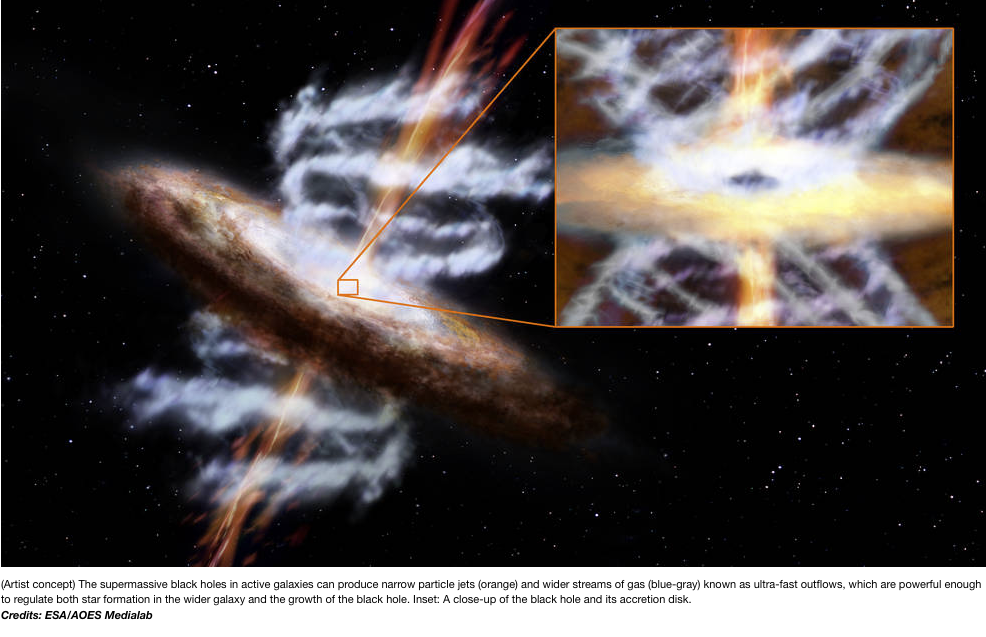
An international conference dedicated to X-ray spectroscopy took place last week in the Polish capital. The conference is funded by AHEAD (Integrated Activities for High Energy Astrophysics), a European H2020 project led by INAF/IAPS of Rome. AHEAD aims to combine efforts and strengthen the community of high energy astrophysics. Among the various topics presented in the conference were UFOs, acronym for ultrafast outflows: ultra-high velocity jets expelled from supermassive black holes at the core of galaxies. One of the conference presenters Dr. Tombesi (Tor Vergata University) describes in detail the nature of UFOs.
Contrary to common belief, not all the gas that is attracted by a supermassive black hole is lost forever. Part of this gas is first ejected, perhaps due to the large radiation or magnetic forces in the disk. This gas can reach very high speeds, even 10-30 percent of the speed of light. For this reason, it is called “ultrafast outflow”, or UFO. These ionized plasmas are predominantly observable at high energies, in X-ray spectra, through lines of iron absorption.
In recent years evidence has been gathered of the links between the supermassive black holes and the galaxies in which they reside. For example, the largest the mass of the black hole, the faster the stars move in the central regions of the galaxy. In addition, comparing cosmological observations and simulations, it was argued that there had to be very energetic phenomena that could limit the formation of stars and hence the growth of galaxies. Until now, it was only suspected that the central supermassive black hole could be the direct cause of these phenomena. Today we have been able to test this hypothesis. Thanks to the combination of X-ray and sub-millimetre observations, we were able to connect the ultra-fast winds produced by the disk around the black hole with the cold and very massive molecular clouds of those same galaxies. In this manner, we demonstrated that the supermassive black holes can directly influence the formation of new stars that would be created by the gravitational collapse of cold clouds.
